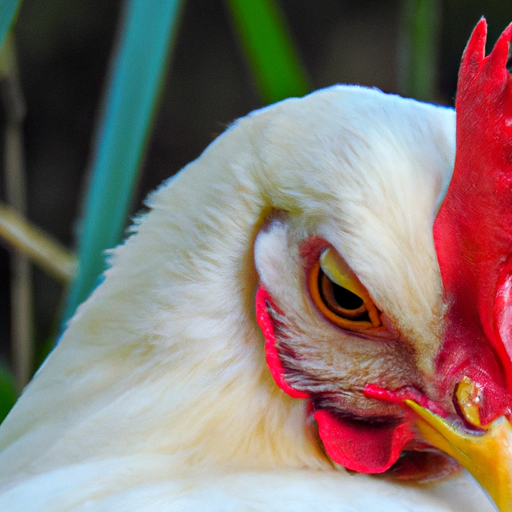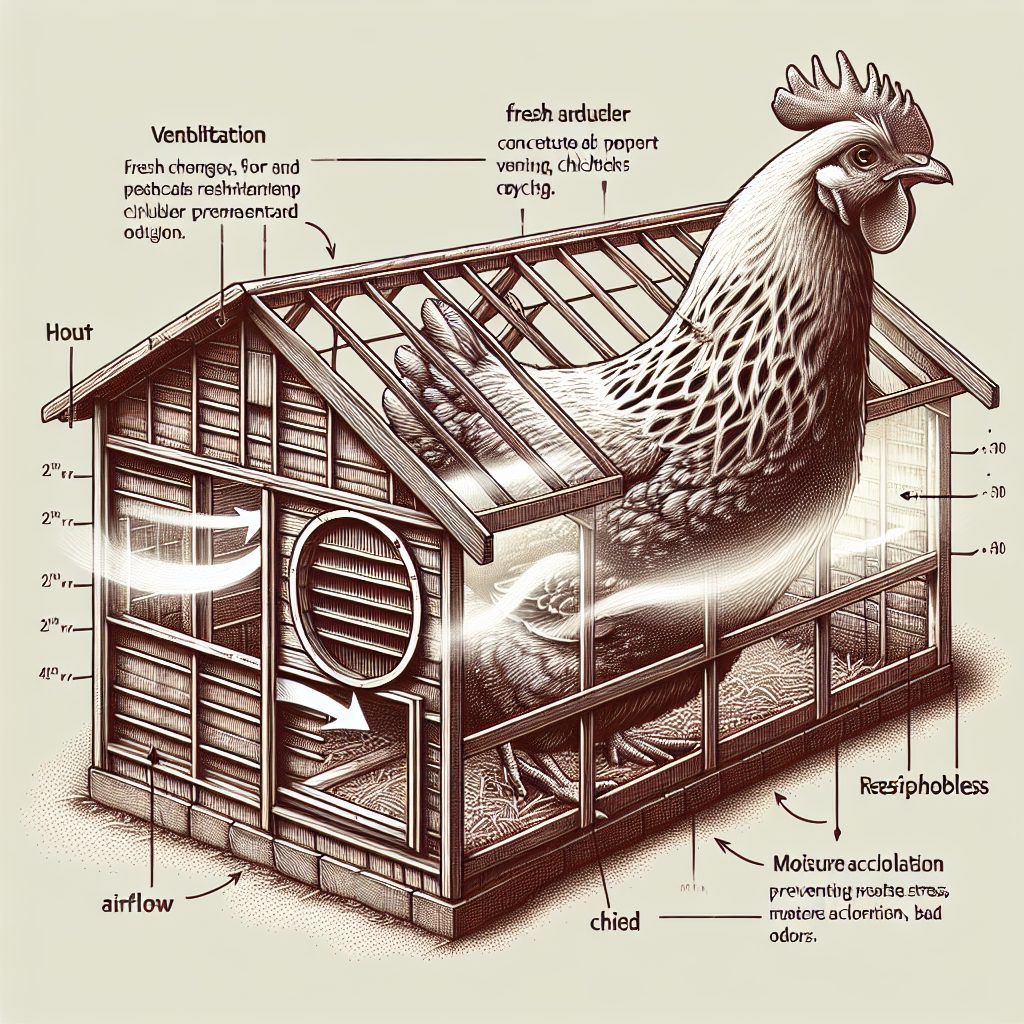Do you own chickens or are you considering getting some? It’s important to be aware of common diseases that can affect chickens and know how to recognize and treat them. In this article, we will discuss some common chicken diseases, their symptoms, and possible treatment options. By being knowledgeable about these diseases, you can ensure the health and well-being of your feathered friends.
Common Chicken Diseases
Owning chickens can be a rewarding experience, but it also comes with its fair share of challenges. One of the biggest challenges for chicken owners is dealing with common chicken diseases. It’s important to be aware of these diseases and know how to recognize and treat them to ensure the health and well-being of your flock. In this article, we will explore some of the most common chicken diseases, their symptoms, diagnosis, treatment, and prevention methods.
Infectious Bronchitis
Overview
Infectious Bronchitis is a highly contagious respiratory disease that affects chickens of all ages. It is caused by a coronavirus and spreads rapidly within a flock. The virus primarily affects the respiratory system, leading to coughing, sneezing, and nasal discharge.
Symptoms
The symptoms of Infectious Bronchitis can vary but typically include coughing, sneezing, nasal discharge, watery eyes, decreased egg production, and a drop in feed consumption. Chickens may also exhibit respiratory distress and produce eggshells with unusual shapes or textures.
Diagnosis
A veterinarian can diagnose Infectious Bronchitis through a combination of clinical signs, a thorough physical examination, and laboratory tests. Samples may be collected from affected birds for PCR testing to confirm the presence of the virus.
Treatment
There is no specific treatment for Infectious Bronchitis. However, supportive care is crucial to aid in recovery. This includes providing a clean and stress-free environment, ensuring proper ventilation, and offering a balanced diet to boost the chicken’s immune system.
Prevention
Preventing Infectious Bronchitis involves strict biosecurity measures, such as quarantine procedures for new birds, disinfection protocols, and limiting exposure to wild birds or infected flocks. Vaccination is also available and can provide some level of protection against the disease.
Newcastle Disease
Overview
Newcastle Disease is a highly contagious viral infection that affects chickens, as well as other bird species. It is caused by the Newcastle disease virus (NDV) and can cause significant mortality within a flock. The virus primarily targets the respiratory and nervous systems.
Symptoms
The symptoms of Newcastle Disease include respiratory distress, sneezing, coughing, nasal discharge, diarrhea, decreased egg production, and nervous system signs such as trembling or paralysis. In severe cases, sudden death may occur without any prior clinical signs.
Diagnosis
A veterinarian can diagnose Newcastle Disease based on the clinical signs, history, and laboratory tests. Swabs from the respiratory tract or cloaca may be collected for virus isolation or PCR testing to confirm the presence of the Newcastle disease virus.
Treatment
There is no specific treatment for Newcastle Disease. Supportive care, similar to that for Infectious Bronchitis, is essential. Keeping the birds in a stress-free environment, maintaining proper ventilation, and providing a balanced diet can aid in the recovery process.
Prevention
Preventing Newcastle Disease involves practicing strict biosecurity measures, including quarantine for new birds, disinfection protocols, and limiting contact with wild birds. Vaccination is highly recommended and can provide significant protection against the disease.
Avian Influenza
Overview
Avian Influenza, also known as bird flu, is a viral disease that affects various bird species, including chickens. It is caused by the influenza A virus and can be highly pathogenic, leading to severe illness and mortality in poultry.
Symptoms
The symptoms of Avian Influenza can range from mild to severe. They include respiratory distress, coughing, nasal discharge, decreased egg production, diarrhea, and sudden death. In some cases, neurological signs may also be present.
Diagnosis
A veterinarian can diagnose Avian Influenza through a combination of clinical signs, history, and laboratory tests. Swabs from the respiratory tract or cloaca, as well as blood samples, may be collected for virus isolation or PCR testing to confirm the presence of the avian influenza virus.
Treatment
There is no specific treatment for Avian Influenza. Supportive care, as mentioned before, is crucial. Medications may be used to control secondary bacterial infections, and antiviral drugs may be considered in severe cases.
Prevention
Preventing Avian Influenza involves strict biosecurity measures, including limiting contact with wild birds, practicing good hygiene, and following quarantine and disinfection protocols. Vaccination is available for some strains of avian influenza and can offer protection to chickens.
Marek’s Disease
Overview
Marek’s Disease is a highly contagious viral infection that primarily affects young chickens. It is caused by the Marek’s Disease virus (MDV) and can cause tumors, paralysis, and death. The virus mainly targets the nervous system, causing various clinical signs.
Symptoms
The symptoms of Marek’s Disease can vary but typically include paralysis of limbs or wings, weight loss, poor feather development, growth retardation, and depression. In some cases, tumors may develop in internal organs, leading to organ failure.
Diagnosis
Marek’s Disease can be challenging to diagnose definitively. However, a veterinarian can evaluate the clinical signs, history, and laboratory tests to make an accurate diagnosis. These tests may include serologic testing, histopathology, or PCR testing.
Treatment
There is no specific treatment for Marek’s Disease. Supportive care and management strategies are essential to minimize the impact of the disease. Good nutrition, proper sanitation, and reducing stress are crucial for supporting the affected birds’ immune system.
Prevention
Preventing Marek’s Disease involves vaccinating chicks at a young age, preferably on the day of hatching. Strict biosecurity measures, such as preventing contact with other flocks and wild birds, are also essential to reduce the risk of infection.
Coccidiosis
Overview
Coccidiosis is a common parasitic disease caused by various species of the Eimeria protozoa. It affects the intestinal tract of chickens and can lead to severe diarrhea and weight loss. Coccidia are present in the environment, and chickens become infected by ingesting them.
Symptoms
The symptoms of Coccidiosis include diarrhea, weight loss, reduced feed intake, dehydration, and anemia. Chickens may also exhibit huddling behavior, ruffled feathers, and general weakness. Severe cases can be life-threatening, especially in young or immunocompromised birds.
Diagnosis
Coccidiosis can be diagnosed based on clinical signs, history, and laboratory tests. Fecal samples may be examined under a microscope to identify the presence of coccidia oocysts. Veterinarians may also perform necropsies to observe intestinal lesions.
Treatment
Several medications, called coccidiostats, are available to treat coccidiosis. However, it is important to follow the veterinarian’s instructions and dosage guidelines carefully. Supportive care, including maintaining hydration and proper nutrition, is critical for the affected birds’ recovery.
Prevention
Preventing coccidiosis involves maintaining a clean environment, practicing good hygiene, and providing proper nutrition. Coccidiosis vaccines are also available and can be administered to young chicks to help build their immunity against the disease.
Infectious Coryza
Overview
Infectious Coryza is a bacterial respiratory disease that affects chickens. It is caused by the bacterium Avibacterium paragallinarum and is highly contagious. The disease primarily affects the upper respiratory tract, leading to nasal discharge, swelling of the face, and respiratory distress.
Symptoms
The symptoms of Infectious Coryza include nasal discharge, facial swelling, swollen eyes, difficulty breathing, decreased egg production, and a drop in feed consumption. Chickens may also exhibit sneezing, coughing, and depression.
Diagnosis
A veterinarian can diagnose Infectious Coryza based on the clinical signs, history, and laboratory tests. Swabs from the affected bird’s nasal cavity or sinuses may be collected for bacterial culture and antibiotic sensitivity testing.
Treatment
Infectious Coryza can be treated with antibiotics, but it is important to follow the veterinarian’s guidance on dosage and duration. Supportive care, including ensuring proper ventilation and providing a balanced diet, can aid in the chicken’s recovery.
Prevention
Preventing Infectious Coryza involves implementing strict biosecurity measures, such as regular disinfection protocols and limiting contact with infected birds. Vaccination is available and can provide additional protection against the disease.
Fowl Cholera
Overview
Fowl Cholera, also known as Pasteurellosis, is a bacterial disease that affects chickens and other bird species. It is caused by the bacterium Pasteurella multocida and can lead to septicemia, respiratory distress, and death. The disease can be acute or chronic.
Symptoms
The symptoms of Fowl Cholera can vary depending on the form of the disease. Common signs include respiratory distress, swollen wattles, swollen joints, diarrhea, weight loss, and sudden death. In acute cases, affected birds may die without showing any prior signs.
Diagnosis
A veterinarian can diagnose Fowl Cholera based on clinical signs, history, and laboratory tests. Blood samples, tissue samples, or swabs may be collected for bacterial culture and antibiotic sensitivity testing.
Treatment
Fowl Cholera can be treated with antibiotics, but prompt treatment is essential to prevent further spread and mortality. The choice of antibiotics will depend on the strain and antibiotic sensitivity testing. Supportive care, including good nutrition and a stress-free environment, is important for the chicken’s recovery.
Prevention
Preventing Fowl Cholera involves practicing strict biosecurity measures, such as regular disinfection and isolation of sick birds. Vaccination is available and can help reduce the risk of infection in susceptible flocks.
Fowl Pox
Overview
Fowl Pox is a viral disease that affects chickens, both commercially raised and backyard flocks. It is caused by the Avipoxvirus and is characterized by the development of nodules or lesions on the skin or mucous membranes, particularly around the head and neck.
Symptoms
The symptoms of Fowl Pox include the development of yellowish nodules or lesions on the skin, in the mouth, or around the eyes or beak. Chickens may also exhibit reduced appetite, decreased egg production, respiratory distress, or difficulty swallowing.
Diagnosis
Diagnosing Fowl Pox is usually based on the characteristic clinical signs and history. Laboratory tests, such as PCR or virus isolation, may be performed to confirm the presence of Avipoxvirus if necessary.
Treatment
There is no specific treatment for Fowl Pox, as the disease is self-limiting and resolves on its own over time. However, supportive care can help alleviate symptoms and aid in the chicken’s recovery. This includes providing a clean and stress-free environment, offering easily digestible food, and ensuring proper hydration.
Prevention
Preventing Fowl Pox involves implementing strict biosecurity measures, such as limiting exposure to mosquitoes or other vectors that can transmit the virus. Vaccination is available and can be administered to susceptible flocks as a preventive measure.
External Parasites
Overview
External parasites are a common problem in chickens and can cause significant discomfort and distress. They include mites, lice, fleas, and ticks. These parasites feed on the chicken’s blood, irritate their skin, and can transmit diseases.
Common Parasites
The most common external parasites in chickens include:
-
Chicken Mites: They are small arachnids that hide in cracks and crevices during the day and come out at night to feed on the chickens’ blood.
-
Chicken Lice: Lice are small, wingless insects that live on the chicken’s feathers, lay their eggs in the base of the feathers, and feed on the chicken’s blood.
-
Fleas: Although less common in chickens, fleas can infest them, causing itching, irritation, and discomfort.
-
Ticks: Ticks can attach themselves to chickens’ skin and feed on their blood. They are more commonly found in outdoor or free-range chickens.
Symptoms
The symptoms of external parasite infestations include intense itching, feather loss, anemia, pale comb or wattles, restlessness, poor growth, and irritability. Chickens may also exhibit visible signs of the parasites, such as mites or lice crawling on their skin or feathers.
Diagnosis
Diagnosing external parasite infestations can be relatively straightforward by visually inspecting the chicken’s skin, feathers, and coop. Close examination may reveal the presence of parasites, eggs, or bite marks.
Treatment
Treating external parasites involves various methods, including topical treatments, dusting powders, or sprays specifically designed to kill and repel parasites. Cleaning and disinfecting the coop and treating the surrounding environment are also crucial to prevent reinfestation.
Prevention
Preventing external parasite infestations involves practicing good hygiene, such as regularly cleaning and disinfecting the coop and providing a clean environment for the chickens. Inspecting new additions to the flock for signs of parasites and maintaining a regular parasite control regimen can also help prevent infestations.
In conclusion, being able to recognize and treat common chicken diseases is essential for every chicken owner. By understanding the symptoms, diagnosis methods, available treatments, and prevention strategies for diseases like Infectious Bronchitis, Newcastle Disease, Avian Influenza, Marek’s Disease, Coccidiosis, Infectious Coryza, Fowl Cholera, Fowl Pox, and external parasites, you can ensure the health and well-being of your flock. Remember, prevention is key, so practicing good biosecurity measures and maintaining a clean and stress-free environment for your chickens are crucial steps in keeping them happy and disease-free.




